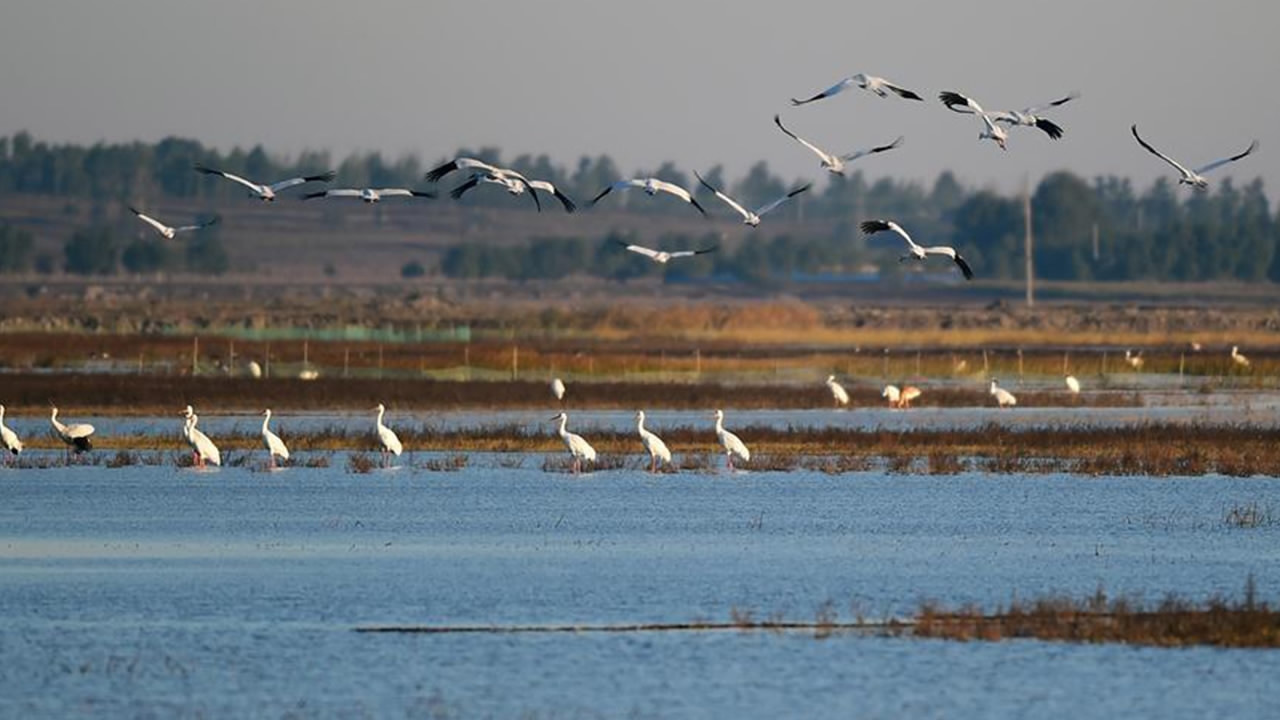
Culture
22:49, 27-Oct-2017
Momoge reserve: A heaven of migratory birds
By Chen Xieyuan

Located in Zhenlai County, northeast China's Jilin Province, Momoge nature reserve is a key stopover site and breeding place for migratory birds flying south for winter, attracting hundreds of thousands of them every year.
The gathering of oriental white storks attracts ornithologists and experts who regard the scene as a sort of miracle.
Pan Shengyu is a member of China Wildlife Conservation Association: "The coast of Nenjiang River has long served as a key stopover point for migratory oriental white storks in spring and autumn. This year we observed more than 6-hundred, which is very rare. The number in the year before last was only more than 3-hundred."
Rare birds have special requirements for their living environment.
The fact that Momoge has so many oriental white storks, and a significant number of other crane species, is evidence of an appealing environment.
But the 1,400-square-kilometer nature reserve is not like it was before.
A severe flood in 1998 and subsequent droughts over the next 15 years were key factors for the sharp decline in Momoge’s wetlands.
Human activity has also been blamed for the dramatic reduction in the number and variety of birds.
Local authorities are trying to restore the areas by linking rivers and lakes. Since a pumping station was set up in 2012, it has added 2-million cubic meters of water annually to the natural reserve.
Other restrictions are put in to protect the birds. Yu He is the head of Zhenlai County Forestry Inspection Team.
“We have put in place three measures. The first is to set barriers and close the roads. The second is to prohibit outsiders from farming and fishing. The third is to forbid bird watchers from taking photos at close distance, in case they disturb the birds.”
The efforts have paid off. Water inflows have helped recover the wetlands, which now account for more than 80 percent of the total area.
The local government's wetland protection measures have been successful enough that the number of annual migratory white cranes, one of the world’s most endangered, has increased to roughly 38-hundred from 2-hundred.
It is home to 10 of the most highly protected bird species, and 42 species in a lower protection rating in China.
It's hoped the wetlands will become much bigger, to welcome more rare birds as they fly through.

SITEMAP
Copyright © 2018 CGTN. Beijing ICP prepared NO.16065310-3
Copyright © 2018 CGTN. Beijing ICP prepared NO.16065310-3